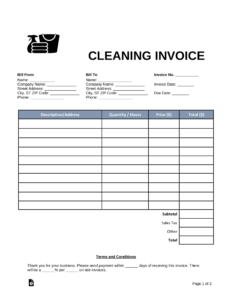In any organization, it is essential to have a robust quality management system in place to ensure that products, processes, and services meet the required standards. However, despite the best efforts, there are occasions when things don’t go according to plan, and non-conformances occur. These non-conformances can lead to deviations from established procedures, resulting in substandard products, customer complaints, and even legal consequences.
In order to address and rectify these non-conformances effectively, organizations utilize a Non Conformance Report (NCR) system. This article aims to provide a comprehensive guide to understanding what a Non Conformance Report is, its importance, how it is structured, and how it can be effectively implemented in an organization.
What is a Non Conformance Report?
A Non Conformance Report, commonly referred to as an NCR, is a document that captures and records any instance of non-compliance, deviation, or non-conformance to established procedures, specifications, or standards. It serves as a formal record of the occurrence and the subsequent actions taken to address and rectify the non-conformance.
The purpose of an NCR is to provide a systematic approach to identify, evaluate, and resolve non-conformances promptly and effectively. By implementing an NCR system, organizations can improve their quality management processes, reduce the likelihood of recurring non-conformances, and enhance customer satisfaction.
Importance of Non Conformance Reports
Non Conformance Reports play a crucial role in quality management systems by providing a structured approach to identify and address non-conformances. Let’s explore some key reasons why NCRs are important:
1. Identifying Systemic Issues
By documenting and analyzing non-conformances, organizations can identify systemic issues within their processes or systems. These issues may be indicative of underlying problems that, if left unaddressed, can lead to recurring non-conformances and quality failures.
For example, suppose a manufacturing company consistently receives NCRs related to the incorrect assembly of a specific product. By analyzing these NCRs, the organization can identify the root cause of the problem, such as inadequate training or a faulty assembly process.
2. Continuous Improvement
Non Conformance Reports serve as a valuable source of data for continuous improvement initiatives. By analyzing the trends and patterns in NCRs, organizations can identify areas for improvement in their processes, products, or services.
For instance, if an organization consistently receives NCRs related to the quality of raw materials received from a specific supplier, it may prompt them to reassess their supplier selection process and explore alternative options.
3. Legal Compliance
In certain industries, non-compliance with established standards or regulations can have legal consequences. Non Conformance Reports provide organizations with a means to document and address non-compliances, reducing the risk of legal action or penalties.
For example, in the pharmaceutical industry, non-compliance with Good Manufacturing Practices (GMP) can result in regulatory actions, product recalls, or even criminal charges. By promptly addressing non-conformances through NCRs, organizations can demonstrate their commitment to compliance and avoid legal repercussions.
Structure of a Non Conformance Report
A well-structured Non Conformance Report ensures that all relevant information is captured accurately and facilitates effective analysis and resolution. While the specific structure may vary depending on the organization’s requirements, here are the key elements typically included in an NCR:
1. Title
The title of the NCR should clearly indicate the nature of the non-conformance. It should be concise and descriptive, allowing easy identification and categorization of the report.
2. Identification Information
This section includes details such as the NCR number, date, department or area where the non-conformance occurred, and the name of the person or entity responsible for reporting the non-conformance.
3. Description of Non Conformance
Here, the NCR should provide a detailed description of the non-conformance, including what went wrong, when it occurred, and any relevant supporting information. This section should be clear and concise, avoiding any ambiguity.
4. Impact Assessment
The impact assessment section evaluates the consequences of the non-conformance. It may include information such as the potential risks to product quality, customer satisfaction, or regulatory compliance.
5. Root Cause Analysis
In this section, the NCR should outline the results of the root cause analysis. This involves identifying the underlying factors or causes that led to the non-conformance. It is essential to conduct a thorough analysis to prevent recurrence.
6. Corrective Actions
The corrective actions section outlines the steps taken or proposed to address and rectify the non-conformance. It should provide a clear plan of action, including responsibilities, timelines, and any required resources.
7. Preventive Actions
In addition to addressing the immediate non-conformance, organizations should also focus on preventing future occurrences. The preventive actions section outlines measures taken or proposed to prevent similar non-conformances in the future.
8. Verification and Closure
This section documents the verification activities performed to ensure the effectiveness of the corrective and preventive actions. It may include details such as verification methods, results, and the responsible personnel’s sign-off.
Implementing an Effective Non Conformance Report System
Implementing an effective Non Conformance Report system requires careful planning, clear communication, and a commitment to continuous improvement. Here are some key steps to consider:
1. Clearly Define Non Conformance Criteria
It is essential to clearly define what constitutes a non-conformance in your organization. This may include deviations from established procedures, product defects, safety incidents, or customer complaints. By defining the criteria, you provide clarity to employees and ensure consistent reporting.
2. Establish Reporting Mechanisms
Organizations should establish clear reporting mechanisms for non-conformances. This may involve creating an online reporting system, implementing a dedicated email address, or providing physical forms for reporting. It is crucial to ensure that reporting is easy, confidential, and accessible to all employees.
3. Train Employees
Effective implementation of an NCR system requires training employees on the importance of reporting non-conformances and the process to follow. Training should focus on raising awareness, building reporting skills, and emphasizing the benefits of the system.
4. Analyze and Track NCRs
Analyze and track NCRs to identify trends, patterns, and areas for improvement. This data-driven approach enables organizations to make informed decisions and prioritize corrective and preventive actions effectively.
5. Review and Update Procedures
Regularly review and update procedures based on the insights gained from NCR analysis. This ensures that processes are continually improved to prevent non-conformances and meet evolving standards or customer expectations.
Case Study: Implementing an NCR System in a Manufacturing Company
To illustrate the practical implementation of an NCR system, let’s consider a case study of a manufacturing company.
Company XYZ: Challenges Faced
Company XYZ, a medium-sized manufacturing company, was facing recurring quality issues and customer complaints. The lack of a systematic approach to address non-conformances resulted in prolonged resolution times and a negative impact on customer satisfaction.
Implementation of an NCR System
Recognizing the need for a robust quality management system, Company XYZ decided to implement an NCR system. Here are the steps they followed:
Step 1: Defining Non Conformance Criteria
Company XYZ established clear criteria for what constituted a non-conformance, including product defects, deviations from specifications, and safety incidents. This provided a standardized framework for reporting and addressing non-conformances.
Step 2: Training Employees
All employees underwent training on the importance of reporting non-conformances and the process to follow. This training emphasized the benefits of the NCR system, such as improved product quality and customer satisfaction.
Step 3: Implementing Reporting Mechanisms
Company XYZ implemented an online reporting system accessible to all employees. They also established a dedicated email address and provided physical forms as alternative reporting mechanisms. This ensured that reporting was easy and confidential.
Step 4: Analyzing and Tracking NCRs
Company XYZ analyzed and tracked NCRs using a centralized database. They identified recurring issues and conducted root cause analysis to address the underlying causes. This data-driven approach enabled them to prioritize corrective and preventive actions effectively.
Step 5: Reviewing and Updating Procedures
Based on the insights gained from NCR analysis, Company XYZ reviewed and updated their procedures. They incorporated best practices, customer feedback, and industry standards to enhance their quality management processes continually.
Results and Benefits
Implementing an NCR system yielded significant benefits for Company XYZ:
- Reduced customer complaints: By addressing non-conformances promptly,Company XYZ was able to reduce customer complaints significantly. The systematic approach to resolving non-conformances ensured that product quality improved, leading to higher customer satisfaction levels.
- Improved efficiency: The NCR system allowed Company XYZ to identify and address systemic issues, resulting in improved process efficiency. By addressing root causes and implementing preventive actions, they were able to streamline their operations and minimize the occurrence of non-conformances.
- Enhanced regulatory compliance: With the NCR system in place, Company XYZ was better equipped to comply with industry regulations and standards. By promptly addressing non-conformances and documenting the actions taken, they were able to demonstrate their commitment to compliance and avoid potential legal consequences.
- Cost savings: Resolving non-conformances in a timely manner helped Company XYZ avoid costly rework, product recalls, or legal penalties. The NCR system enabled them to proactively identify and rectify issues, resulting in significant cost savings.
Frequently Asked Questions (FAQs)
1. What is the difference between a Non Conformance Report and a Corrective Action Report?
A Non Conformance Report focuses on documenting and addressing instances of non-compliance or non-conformance, while a Corrective Action Report specifically outlines the actions taken or proposed to correct the identified non-conformance.
2. Who is responsible for initiating a Non Conformance Report?
Any employee who identifies a non-conformance should be responsible for initiating a Non Conformance Report. It is crucial to encourage a culture of reporting and empower employees to take ownership of quality issues.
3. How can organizations ensure the effectiveness of corrective actions?
To ensure the effectiveness of corrective actions, organizations should establish a robust verification process. This may involve conducting follow-up audits, inspections, or tests to validate that the corrective actions have successfully addressed the non-conformance.
4. Can Non Conformance Reports be used for performance evaluation?
Non Conformance Reports should primarily be used as a tool for continuous improvement and addressing quality issues. While they may provide insights into individual or team performance, it is important to focus on the systemic causes of non-conformances rather than solely attributing them to individuals.
5. How often should Non Conformance Reports be reviewed?
Non Conformance Reports should be regularly reviewed and analyzed to identify trends, patterns, and areas for improvement. The frequency of review may depend on the organization’s needs and the volume of non-conformances. However, it is recommended to conduct reviews at least quarterly to ensure timely action.
Conclusion
A Non Conformance Report system is a vital component of an organization’s quality management system. It provides a structured approach to identify, evaluate, and resolve non-conformances, ultimately leading to improved product quality, customer satisfaction, and regulatory compliance.
By implementing an effective NCR system, organizations can identify systemic issues, drive continuous improvement, and prevent recurring non-conformances. It is crucial to define non-conformance criteria, establish reporting mechanisms, train employees, analyze and track NCRs, and review and update procedures regularly.
Through the case study of Company XYZ, we witnessed the positive impact of implementing an NCR system, including reduced customer complaints, improved efficiency, enhanced regulatory compliance, and cost savings.
By prioritizing quality and investing in an NCR system, organizations can proactively address non-conformances, drive continuous improvement, and ensure their products, processes, and services meet the required standards, resulting in long-term success and customer satisfaction.





